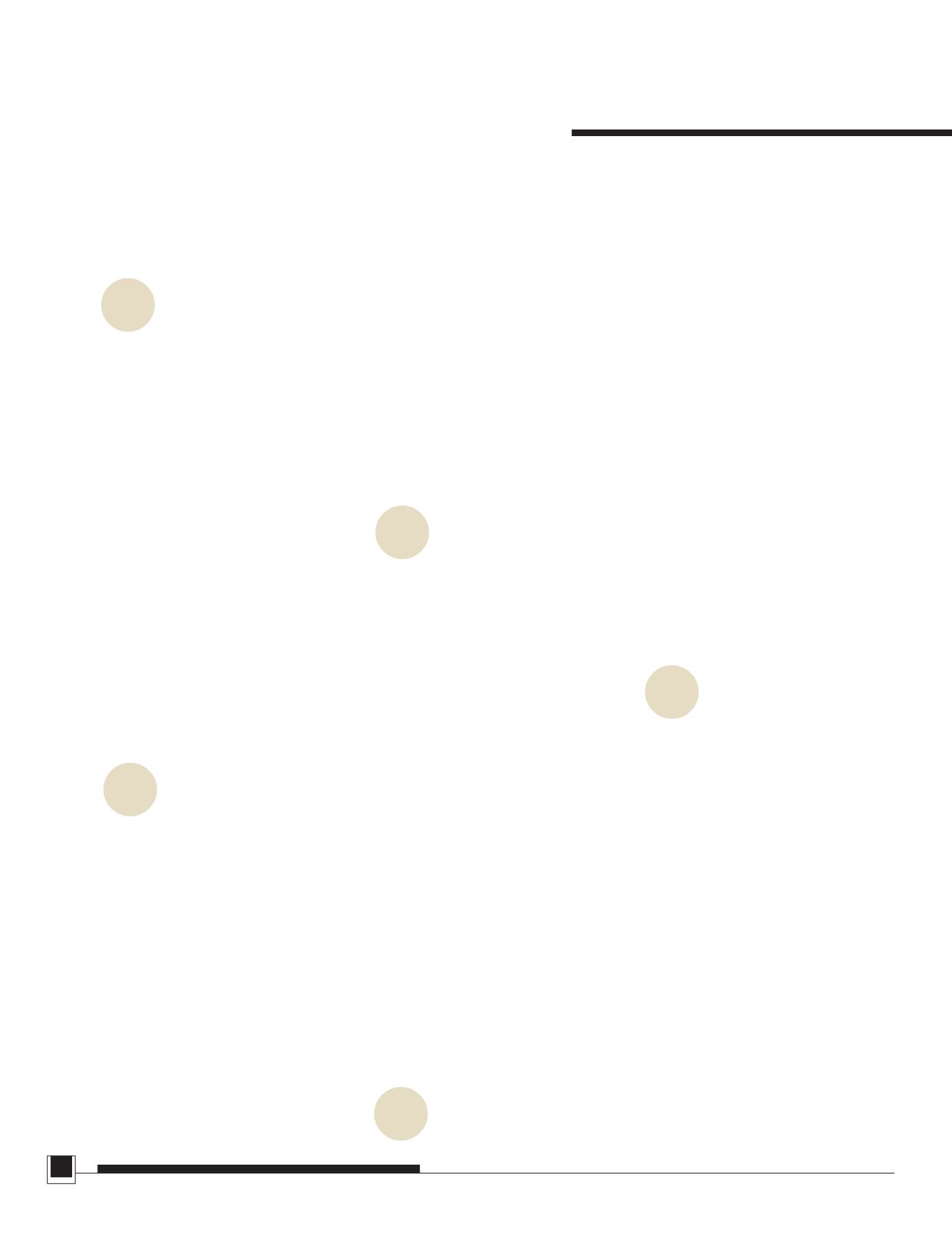
128
R E V I S T A D A E S P M –
J U L H O
/
A G O S T O
D E
2 0 0 3
JOBOPPORTUNITIESFOR
YOUNGBRAZILIANS.
HOWTO INCREASETHEM?
EduardoNajjar
P.
8
It has become common-place to say that today˙s
young professionals will become the leaders of
companies and governments in the near future.
However,both inbusinessandpublicadministration
little is being done to develop professional skills of
theseyoungpeople.Partof theproblem isdue to the
growing distance between University and the
Corporation, who do not have projects in common.
Whoaretheseyoungpeople?Whatdotheythinkabout
their work and their professional future? And what
actions may be envisaged to improve their
professional profiles so that theymay increase the
chances of obtaining jobs and– in themedium and
long range – undertake projects that will help the
country reach the levelof lifestyles thatwedesire for
usand for our families?
LIMITSOFTOLERANCE:
WORKWITHOUTA JOB
HermanoRobertoThiry-Cherques
P.
18
This article examines underwhat conditions people
chose,asameansofsubsistence,individualizedwork
not circumscribed to organizations. It describes the
limits of tolerance, bothon thepart of theemployee
in relation to the organization as from their latter in
relation to the worker, under a political-strategical,
psychophysical and ethical points of view. The
conclusion is that there are indications that new
opportunities are opening for such organization-
intolerants and for those intolerated by them to the
extent that variations of out-of-job work are
conquering space in the economy. “Workwithout a
job”has been viewed negatively. But the exception
doesnotalwaysmeanmarginality.Thistypeofactivity
may be convenient to certain individuals. If current
tendenciesprevail,out-of-jobworkmaybecome the
norm,andnottheexception inthecomingyears.Very
probably, and soon, jobs, the permanent tieswith a
single organization may become residual. Work
inscribed in the organizational space commands a
marginof tolerance. If tolerancemay be considered
to be constructive, in itself it is not a virtue. Goethe
wrote that tolerancemust be transient, that itmust
lead to respect and nothing else, since, in the last
analysis, to tolerate is tooffend.
COACHING:
ONLYSMARTPEOPLE
KNOWTHEYNEED IT.
MarcosSouzaAranha
P.
36
Coaching issomethingthatappearedthousandyears
ago, as ameans of having an enlarged view of the
present inorder tomakedecisionsabout the future.
Thecoach isapersonwho tries tohelpothers reach
theirobjectivethroughtheirbestabilities. Inantiquity,
many leaders looked for outsidehelp to further their
interests reasoning thatdifferentpointsofview from
their ownmight help. The best-known character of
these timeswas the court jester, the only person in
court authorized tospeakhismind.The jesterwasa
competentcoachand thekingknewheneededhim.
Since thewordcoachassumedseveralmeanings, in
Brazil, anddifferent types of professional adopt it, it
is important to set it apart from activities such as
therapy, professional counseling, mentoring and
coachingproper.Whenhiringacoach,askhimabout
themethodology he intends to use andmake sure
thathehasaclearblueprint to follow.Andbeforeyou
decide, tryalso to talkwithother professionals from
yourspecialty,and friendswhohaveexperiencewith
it and/orwhoknowcoaches to recommend toyou.
RETAILTRUTHS–MARKETING
ANDCOMMUNICATION IN
THERETAILMARKET
EdsonZogbi
P.
40
This is an exploratory and analytical text about the
development of marketing and communication in
retailing, from its inset to current times. The gap
between formal education and the market,
simultaneouswith the largemigration of traditional
communication budgets toward the retail level. The
perceptionofretailingbyconsumers.Whatshouldbe
doneaboutcommunicationplanning ,whatmediaand
research tools should be used, ideally, for decision-
making. Manufacturers˙ brands within the retail
structureandthe investmentsofretailers intheirown
brands. The beginning of the crossing of virtual
mediawith thepointofpurchase.Whatconsumers
considerbasicandwhat ismerelydesirable.Retailing
in Internet. The use of creativity to propel the great
dynamicsofretailing.Anexerciseof imaginationupon
the tendencies in the segment, searching for
innovative ideas.
APPLICATIONOF
BEHAVIORALCONSUMER
MODELSTOPRACTICING
CATHOLICS
RodrigoD.deSalvi/ErnestoM.Giglio
P.
58
Each scientific model has the pretension of being
applied to a vast array ofmanifestations of a single
phenomenon. In fact, the ideal to be reached is to
apply it to all categories of the phenomenon under
study.Themodelsof consumerbehavior areused to
explain thechoicesofgoodsandservicesbypeople,
but themay be ideally used to explain the choices
thatarenotnecessarilyrelatedtofinancialexchanges,
butareexchangesofservicesorofrelationships.This
is the case in the process of choice and habits that
have todowith religiousbehavior. In thisarticle, the
authors endeavor to develop reflections about the
coverageofthreebasicmodelsofconsumerbehavior
asapplied to thebehaviorofCatholics.Thesemodels
are typology,stageprocessandsocial influence.The
analysis isvalidatedontwogrounds:ontheonehand,
worksaboutthethirdsectorhave increased innumber
in Brazilian literature; and, on the other hand, the
authorsare interested inoffering theircontribution to
possible changes in the processes of relationship
between theCatholicChurchand its followers.
ENGLISHABSTRACTS
zx


